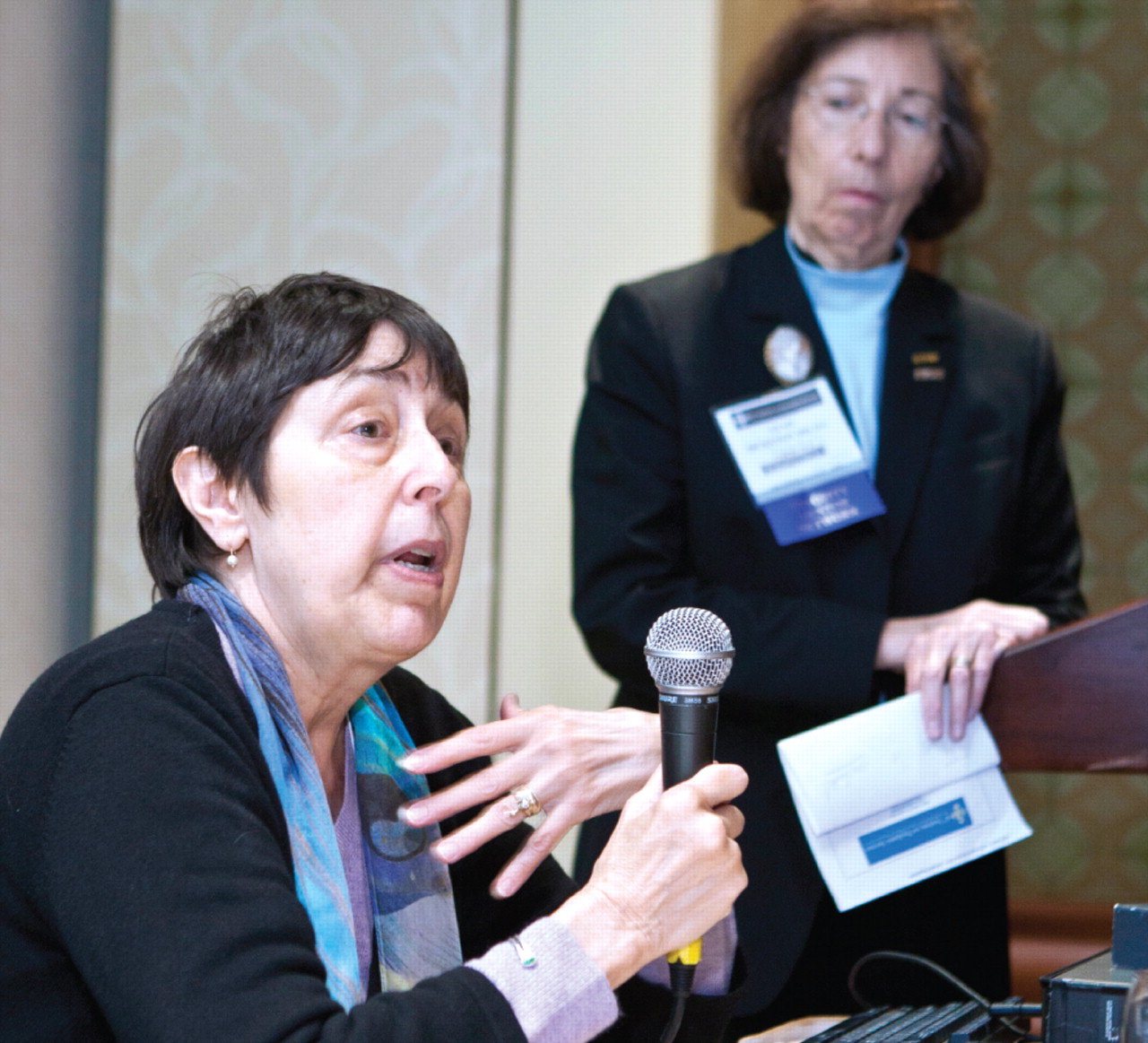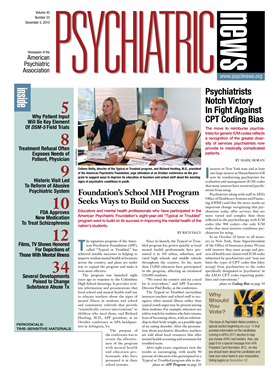Men's and women's experience of violence differs in several ways, a fact that has guided Judith Herman, M.D.'s clinical psychiatry practice.
“A knowledge of violence against women whose lives were dominated by sexual and physical assault allowed me to listen to patients in a new way,” she said in accepting the Alexandra Symonds Award at the Institute on Psychiatric Services in Boston in October. The award is cosponsored by APA and the Association of Women Psychiatrists.
Herman is a clinical professor of psychiatry at Harvard Medical School and director of training in the Victims of Violence Program at the Cambridge Hospital.
Violence against women is prevalent everywhere, the most common human-rights violation in the world, she said.
For male violence victims, the most common perpetrator is a stranger, followed by an acquaintance. For women it's the opposite. Intimate partners are the most likely attackers, followed by acquaintances, and then strangers—even though violence by strangers gets the most attention in the media.
Violence and the attendant helplessness of its victims is also a transient experience for most men, while violence against women is likely to be repeated and prolonged, she said.
This may be one reason why lifetime prevalence of posttraumatic stress disorder (PTSD) is 10 percent for women and 5 percent for men.
What social conditions produce this prolonged trauma?
“There is an array of coercive techniques, of which violence is only one, whose purpose is to establish dominance and break down autonomy and initiative,” she said. “The victim is unable to escape the perpetrator, creating a contaminated identity, so the person no longer has the will to resist.”
Herman has suggested the term “complex PTSD” to cover trauma experienced not in a single instance but over weeks, months, or years. Complex PTSD is characterized in particular by somatization, dissociation, and affect dysregulation.
“It leads to a shamed and damaged sense of self, disrupted interpersonal relationships, and shattered systems of meaning,” she explained. “Shame is one's vicarious experience of the other's scorn.”
Nevertheless, research conducted in the 1970s on victims of single episodes of rape showed that adaptive strategies for recovery do exist, she said. Women who recovered shared several characteristics.
First, they took problem-solving actions following the rape. They reported the crime to the police, changed the locks on their doors, or took self-defense classes, for example.
They also had strong family and social support. Even when it was not immediately forthcoming, they kept trying for a caring response from the people around them. The worst outcomes were found among women who were isolated and lacked such supports.
Finally, women who emerged the best managed to create some social meaning out of their experience. They took action to help other survivors or to prevent similar crimes from happening to other women.
“The only way to make it positive is to make better for others,” Herman reported one woman telling her.
As for therapeutic interventions for women who are victims of violence in general, group therapy is a “wonderful modality” for helping them, Herman pointed out.
“Group members have compassion for other members of the group, but not for themselves,” she said. “But the group experience teaches them to share, to receive feedback, and to lessen their own shame.”
Herman noted that images of the history of modern psychiatry are telling in their depiction of women. Paintings of Phillippe Pinel liberating the insane after the French revolution or of Charcot at the Salpêtrière demonstrating the neurological basis of mental illness both symbolize the mentally ill as women with undraped bosoms—“helpless, passive, vacant,” said Herman.
It would take another century and a half to eliminate the patriarchal figure at the center of the frame and admit women as equals into the ranks of the profession.
That progress has been relatively recent. About 5 percent of the psychiatrists certified by the American Board of Psychiatry and Neurology in 1950 were women, she noted. That proportion grew to 20 percent in 1980, 42 percent in 2000, and Herman expects it to reach parity this year.
“We were part of a generation writing about rape, domestic violence, and child sexual abuse,” she said. “The awareness of the magnitude of this problem came from outside, came from the [women's] movement into psychiatry, and the vector was people like me.”


